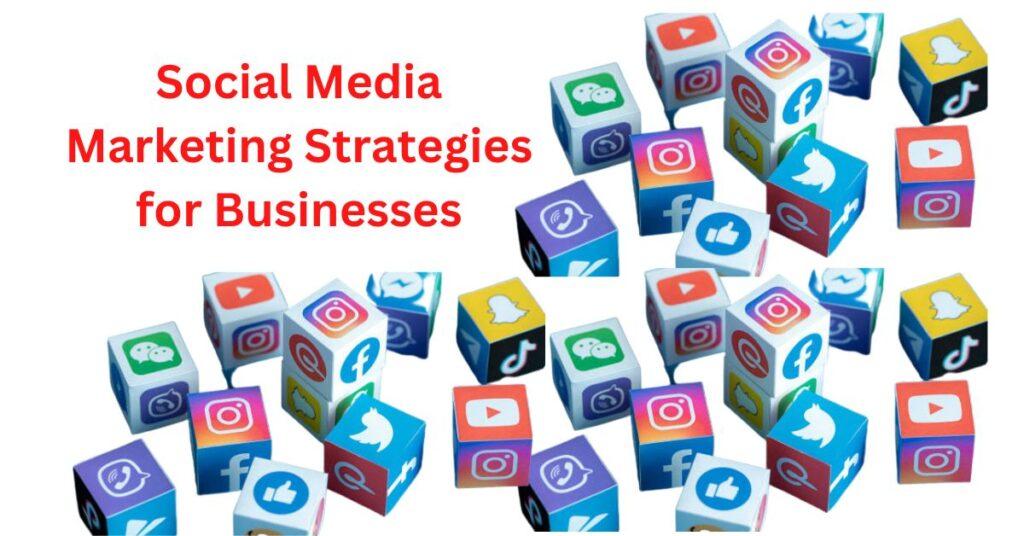Social media marketing is important for businesses of all sizes because it can help you reach and engage with your audience in a meaningful way.
Here are some reasons why social media marketing is important:
Increased brand awareness:
Social media can help increase brand awareness by getting your brand in front of a larger audience. When people see your content on social media, they are more likely to remember your brand and become familiar with it.
Increased website traffic:
You can use social media to drive traffic to your website by sharing links to your website or blog content. This can help increase the visibility of your brand and bring more potential customers to your site.
Improved search engine rankings:
Search engines, such as Google, consider social media signals when ranking websites. This means that having a strong social media presence can help improve your search engine rankings and make it easier for people to discover your website.
Enhanced customer engagement:
Social media is a two-way conversation, so it’s a great way to engage with your customers and build relationships. You can use social media to listen to customer feedback, answer questions, and provide support.
Increased sales:
By using social media to promote your products or services, you can drive sales and increase revenue.
Overall, social media marketing is an important tool for building brand awareness, engaging with customers, and driving business growth.
Here are some tips for creating a successful social media marketing strategy:
1. Define your goals:
It’s important to define your social media goals before creating a social media marketing strategy. This helps ensure that your efforts are aligned with your business objectives and enables you to measure the success of your social media marketing efforts.
Some examples of social media goals include:
- Increasing brand awareness: This involves getting your brand in front of as many people as possible, with the aim of increasing recognition and familiarity.
- Driving traffic to your website: You can use social media to drive traffic to your website by sharing links to your website or blog content.
- Generating leads: You can use social media to generate leads by sharing content that encourages people to provide their contact information or sign up for your email list.
- Engaging with your audience: Social media is a great way to connect with your audience and build relationships. You can use it to encourage people to interact with your brand, ask questions, and provide feedback.
- Increasing sales: Ultimately, many businesses use social media as a way to increase sales. You can use it to promote your products or services and encourage people to make purchases.
It’s important to choose social media goals that are specific, measurable, achievable, relevant, and time-bound (SMART). This will help you create a strategy that is focused and effective.
2. Research your audience:
Researching your social media audience is an important step in creating a successful social media marketing strategy. By understanding your audience’s demographics, interests, and behaviour on social media, you can create content that resonates with them and effectively reach and engage them.
There are several ways to research your social media audience:
- Look at the analytics provided by the social media platforms you use: Most platforms, such as Facebook and Instagram, provide analytics that can help you understand who your followers are and what types of content they engage with.
- Use social media listening tools: These tools allow you to track and analyze social media conversations about your brand, industry, or competitors. You can use this information to identify trends and learn more about your audience.
- Conduct surveys or focus groups: You can use surveys or focus groups to gather more in-depth information about your audience. This can be especially useful if you are trying to understand why they choose to follow your brand or what types of content they prefer.
- Analyze your website traffic: If you have a website, you can use tools such as Google Analytics to understand who is visiting your site and how they are engaging with your content.
By conducting thorough research, you can gain valuable insights into your audience’s preferences and behaviour, which can help you create a more effective social media marketing strategy.
Need help with setting up or implementing Social Media Marketing Strategies for your Business? Get in touch with us to discuss your brief.
3. Select the right platforms:
Choosing the right social media platforms is an important step in creating a successful social media marketing strategy. Not all platforms are right for every business, so it’s important to consider your target audience and the type of content you want to share when selecting platforms.
Here are some things to consider when selecting social media platforms:
- Your target audience: Look at which platforms your target audience is most active on. For example, if you are targeting younger audiences, you may want to consider platforms like TikTok or Instagram. If you are targeting a more professional audience, LinkedIn may be a better fit.
- The type of content you want to share: Different platforms are better suited for different types of content. For example, if you want to share a lot of visual content, such as photos and videos, platforms like Instagram and Pinterest may be a good fit. If you want to share longer-form written content, platforms like LinkedIn or Twitter may be more suitable.
- Your resources: It’s important to be realistic about how much time and resources you can devote to social media. If you don’t have the resources to maintain a presence on multiple platforms, it’s better to focus on a few platforms and do them well rather than trying to spread yourself too thin.
By carefully considering your target audience and the type of content you want to share, you can select the social media platforms that are most likely to help you achieve your business goals.
4. Create a content calendar:
A content calendar is a useful tool for planning and organizing your social media content. It helps you stay on track and ensure that you are consistently posting high-quality content.
Here are some steps for creating a content calendar for social media:
- Define the types of content you want to share: Consider the goals of your social media marketing strategy and the types of content that will help you achieve those goals. This could include blog posts, infographics, videos, or other types of content.
- Plan out the frequency of your posts: Decide how often you want to post on each platform. This will depend on your resources and the level of engagement you want to achieve.
- Schedule specific dates and times for your posts: Use your content calendar to plan out the specific dates and times that you will post each piece of content. This will help you stay organized and ensure that you are consistently posting.
- Leave room for flexibility: While it’s important to have a plan, it’s also important to leave room for flexibility. You may need to make adjustments based on current events or changes in your marketing strategy.
By creating a content calendar, you can ensure that you are consistently sharing high-quality content that helps you achieve your business goals.
Need help with setting up or implementing Social Media Marketing Strategies for your Business? Get in touch with us to discuss your brief.
5. Visual content, such as images and videos, can be highly effective in social media marketing.
Here are some reasons why visuals are important in social media marketing:
- Visual content is more engaging: Posts with visuals tend to get more likes, comments, and shares than those without. This is because visuals are more eye-catching and can help grab people’s attention.
- Visual content is more memorable: People are more likely to remember information if it is presented in a graphic format. This makes visuals a powerful tool for increasing brand awareness and recall.
- Visual content can help convey complex information: Sometimes it can be difficult to explain complex ideas in words alone. Visuals, such as charts or infographics, can help make complex information easier to understand.
- Visual content is more shareable: People are more likely to share visual content on social media than text-based content. This can help increase the reach of your content and bring more traffic to your website.
By incorporating visuals into your social media marketing strategy, you can make your posts more engaging and effective. Just be sure to use high-quality visuals that are relevant to your brand and messaging.
Need Social Media graphic design? Get in touch with us today!
6. Social media is a two-way conversation, so it’s important to actively engage with your audience.
Here are some tips for engaging with your audience on social media:
- Respond to comments and messages: Make sure to respond to comments and messages from your followers, as this helps build relationships and demonstrates that you value their input.
- Ask questions: Asking questions is a great way to encourage interaction and get to know your audience better. You can ask for feedback, opinions, or ideas on topics related to your industry or brand.
- Share user-generated content: Sharing content created by your followers can help create a sense of community and encourage people to engage with your brand. You can also consider running a contest or promotion that encourages people to create and share content related to your brand.
- Use hashtags: Hashtags can help you connect with people who are interested in similar topics. Use relevant hashtags to increase the visibility of your posts and make it easier for people to discover your content.

By actively engaging with your audience on social media, you can build relationships and create a community around your brand. This can help increase loyalty and drive long-term success.
7. Tracking and measuring your social media results is an important part of your social media marketing strategy.
This will help you understand what’s working and what’s not, so you can make adjustments as needed.
Here are some metrics you can track to measure the success of your social media marketing efforts:
- Reach: This is the number of people who have seen your content. You can track the reach of your posts to see how many people are being exposed to your brand on social media.
- Engagement: This is the level of interaction people have with your content, such as likes, comments, and shares. Higher engagement can indicate that people are interested in your brand and content.
- Traffic: You can track how much traffic your website is getting from social media to see how effective your social media marketing efforts are at driving people to your website.
- Sales: If your goal is to increase sales, you can track how many sales are coming from social media to see the impact of your efforts.
- Brand sentiment: You can use social media listening tools to track and analyze the sentiment around your brand on social media. This will help you understand how people feel about your brand and identify any areas for improvement.
- By tracking and measuring your social media results, you can get a better understanding of what’s working and what’s not, and make adjustments to your strategy as needed.
By following these tips, you can create a successful social media marketing strategy that helps you achieve your business goals and effectively engage with your audience.
Need help with setting up or implementing Social Media Marketing Strategies for your Business? Get in touch with us to discuss your brief.
Need more resources? Read more on our blog.
